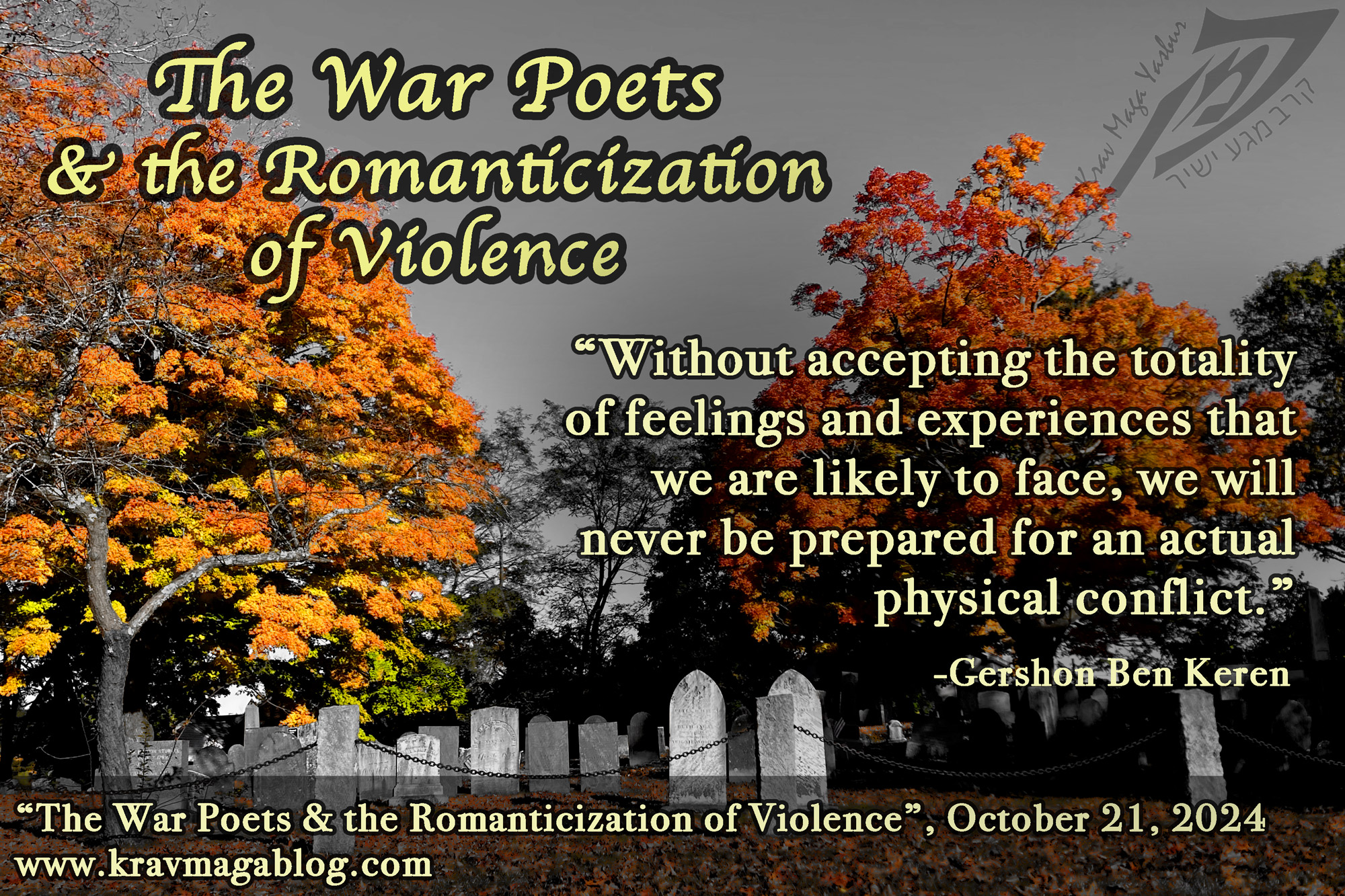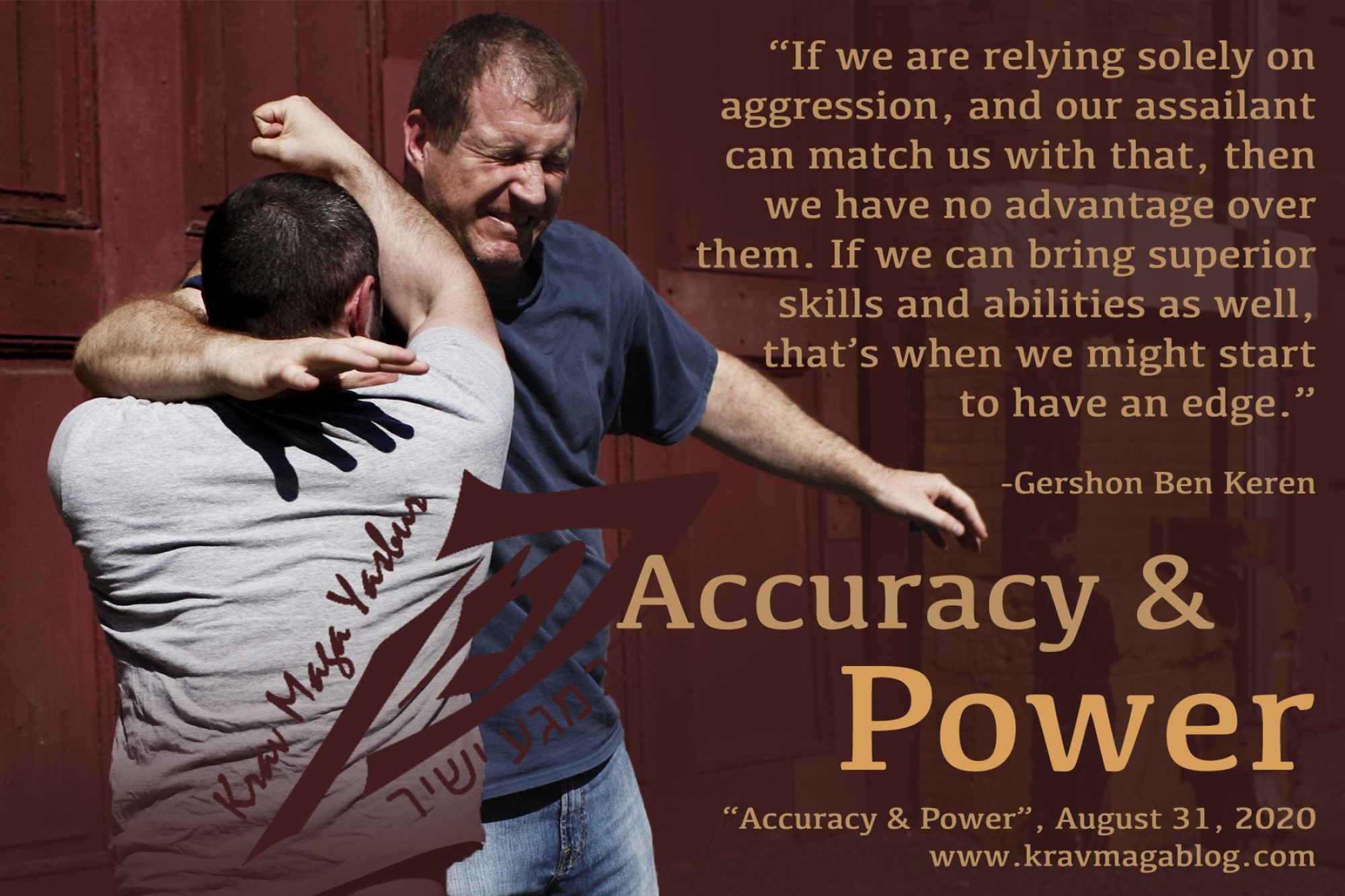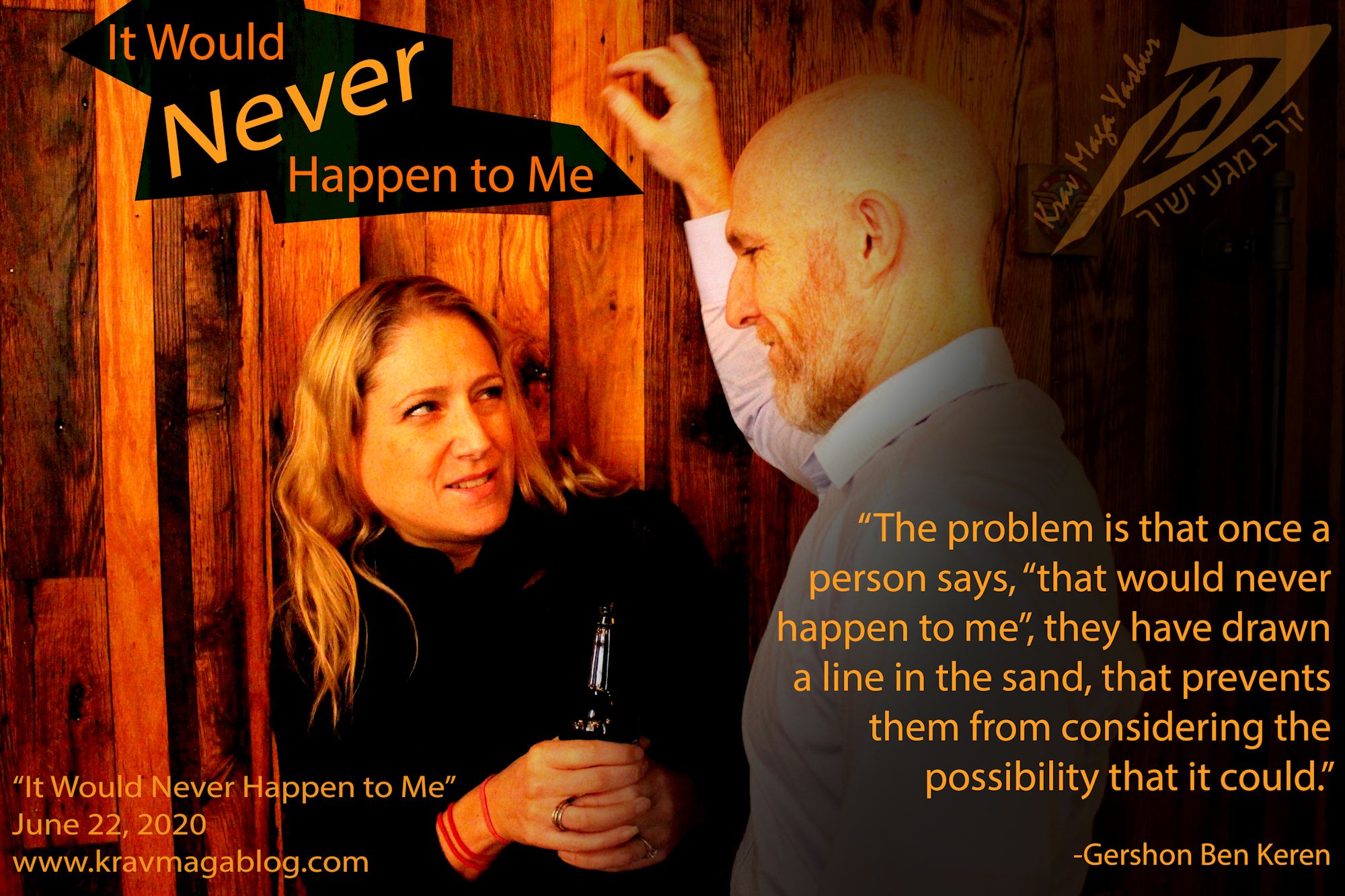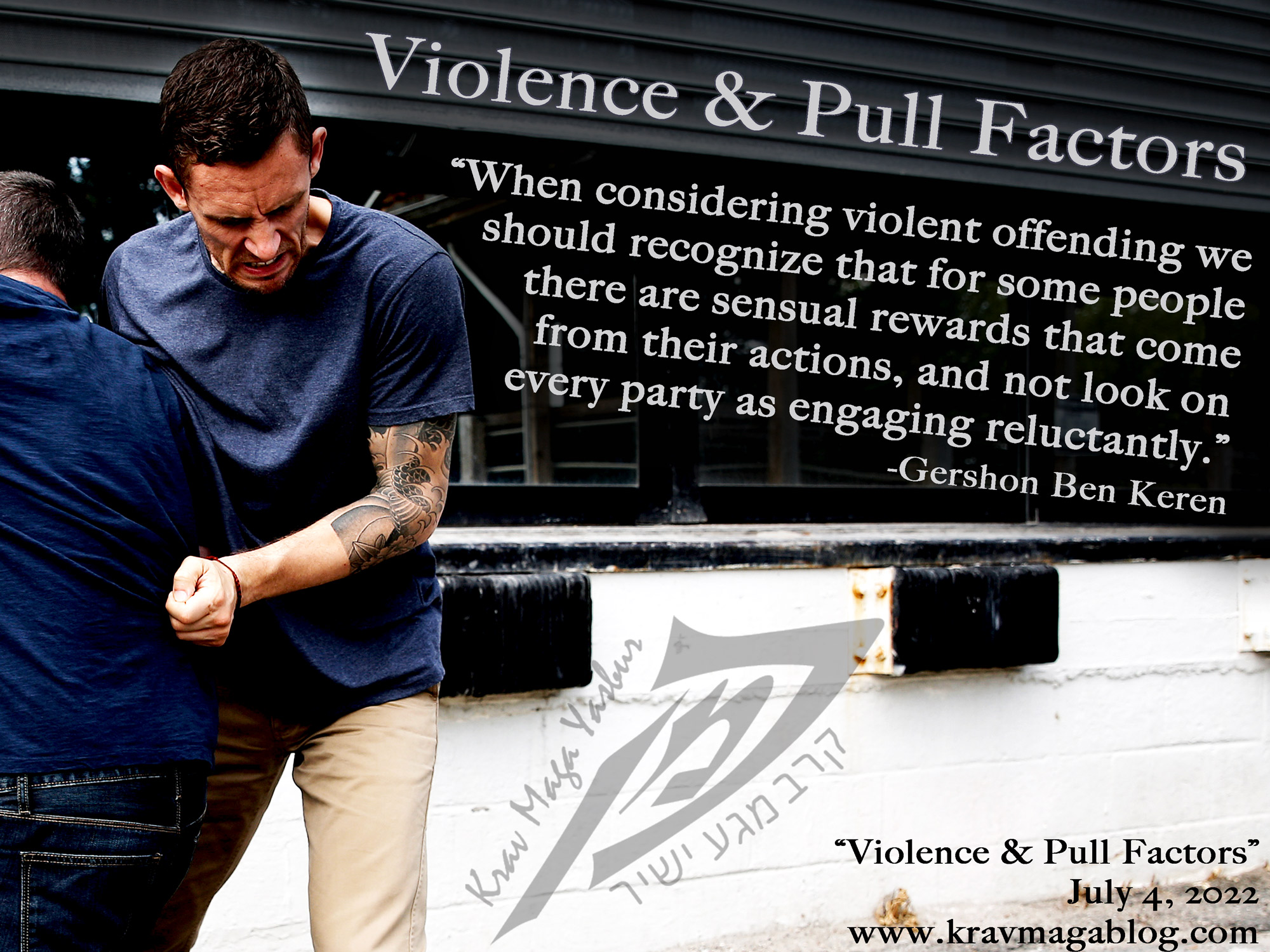Violence & Pull Factors, is an article written by Gershon Ben Keren, a 5th Degree Black Belt in Krav Maga, who teaches Krav Maga in Boston, MA. He has also authored three Amazon best-Selling Books on Krav Maga.
There are a number of reasons why offenders choose to commit the crimes they do. Sometimes they are introduced by a peer, or group of peers to a particular type of offending e.g., they are with a group of friends, when one decides they should target an individual they come across for a street robbery etc. When they discover how easy it is to obtain money by these means, they branch out on their own etc. However, they may also be unnerved by the interaction, and realize that they lack the confidence to commit such an offense but at the same time realize that crime does result in financial reward, and so decide to engage in petty theft, and/or stealing automobiles which allows them to commit offenses without having to confront/threaten people, and the potential consequences that might result when doing so e.g., finding out that the person confronted isn’t going to acquiesce to the demands made of them etc.
Often, when criminologists look at the reasons as to why people offend, they end to look at the “push” factors e.g., how poverty, lack of legitimate opportunities etc., influence and direct people into offending – someone who grows up in a socially and financially disadvantaged area, with poor schooling, who fails to obtain one of a small number of low-paying service jobs in their locale, begins to sell drugs for a dealer etc. There is often a reluctance to consider the “pull” factors that draw people towards offending, and violence; the thrills that people often get from offending, or the lifestyle that accompanies violent offending, including the respect it generates. In this article I want to look at and consider some of these “pull” factors that draw people towards violent offending. I don’t want to debate whether push factors, are more important than pull factors, or the other way round etc., when looking at offending in general, as this could result in an ecological fallacy, where we incorrectly draw the wrong conclusions about individuals’ motivations based on that of the group as a whole.
Jack Katz, coined the phrase, “sneaky thrills”. Katz posited that crime had a seductive element to it, that it could result in sensual rewards such as excitement, even when the focus of the offense was material. His focus was primarily on shoplifting, and that termed by those in loss=prevention as “Amateur” e.g., young people impulsively stealing goods for personal use, that they could possibly afford to buy themselves etc. Such thefts are not motivated by necessity, but are committed for the thrill of it i.e., for emotional reward. In interviewing university students he taught, he found that many had engaged in these types of petty thefts and crimes, and that the phenomena was widespread. He also found that those who had committed such offenses, didn’t identify themselves as “criminals” even though they had clearly committed crimes. This is actually true of many shoplifters, even those that steal on a regular basis for personal consumption (casual shoplifters), or those that steal to sell on their goods to others to generate cash (professional shoplifters). Many people who commit these crimes see them as “victimless” as the target of their offenses is a commercial institution/organization rather than an individual. Violence also has an allure for some. This is clearly evidenced in soccer hooliganism in the UK, where “firms” made up of people from all walks of life and backgrounds – including city bankers, financiers, company directors etc. – regularly meet up for the sole purpose of fighting. The level of organization that these firms/gangs represent is often misunderstood by those whose only exposure to them comes from reading a news headline. All of the leaders of the various firms know each other and are in regular contact with each other. Not only do they schedule showdowns with rival firms, but they will also accept members of rival firms to join them when their team is playing an international game, and they have scheduled a fight with that rival team’s fans. For some members of these groups there may be some push factors, such as peer pressure, but for many it is the simple thrill, adrenaline rush and sensual/emotional rewards that they get from fighting.
Whilst many in Katz’s study didn’t see or identify themselves as criminals, there are those that want to be recognized and labelled as such. For some people their identity as a gangster and or “hardman” is central to them – although may city workers who engage in weekend football violence don’t want their co-workers to know how they spend their time, they do want to enjoy the prestige that their violent activities bring them from fellow members of their firm (and potentially others). In certain communities where there are limited opportunities to gain respect, violence is one way that this can be accomplished. One of the things that those in Katz’s studies commonly remarked upon was the thrill of getting away with it, and this is something that many of those who lead “criminal lifestyles” remark upon i.e., that nobody including the police can stop them from committing their offenses. This feeling of out-witting others, and being above and beyond the law etc., doesn’t itself result in material gain(s), however it does bring with it a sensual reward, and for some is a seductive motive that draws them towards a criminal lifestyle.
Individuals’ motivations to engage in violent offending are a mix of push and pull factors e.g., youth gangs in the West of Scotland have a history of engaging in recreational violence because of the lack of other ways to “entertain” themselves, however members do enjoy the thrills that come from chasing down a rival gang member they find on their “turf” and the physical exhilaration and sense of power that they get from physically punishing and hurting them. They also get the sense of belonging that comes from acting as part of a group etc. These can be rich rewards when there are few other alternative ways to accomplish these things. When considering violent offending we should recognize that for some people there are sensual rewards that come from their actions, and not look on every party as engaging reluctantly.
0 COMMENTS















